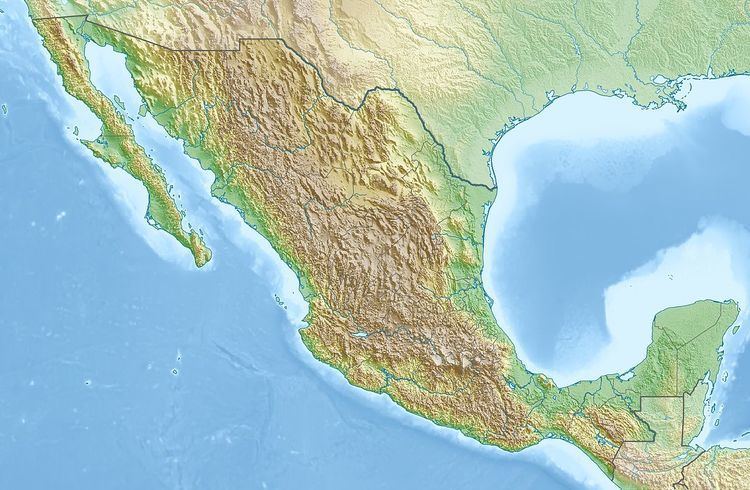Phone +52 238 384 7848 | Area 4,900 km² Established 2012 | |
 | ||
Similar Museo del Valle de Tehuacán, Pantanos de Centla, El Vizcaíno Biosphere Reserve, Ría Lagartos, Laguna de Términos | ||
The Tehuacán-Cuicatlán biosphere reserve is a protected natural area located in southeastern Mexico. Its name derives from its two main locations: Cuicatlán and Tehuacán, in the latter are their administrative offices, covers 490,186 hectares distributed among 21 municipalities in the state of Puebla and Oaxaca.
Contents
Location
The area belongs and is located in the Sierra Madre del Sur. It is characterized by its rugged terrain, where mountain ranges that do not exceed three thousand meters above sea level around the broad valleys of Tehuacán and Zapotitlan and the Glen of Cuicatlán. Almost all of the reserve is part of the upper basin Papaloapan river, one of the largest rivers of Mexico, even though in this area the humidity is not enough to form large streams. The Papaloapan receives waters of numerous streams that originate in the mountains of the Sierra de Tehuacán and Sierra Mixteca, including Tehuacán, and the rivers, Calapa and Zapotitlan.
The climate of the region is warm semi-dry and warm semi-tropical in the region of the Glen Cuicatec with moderate rains scarce in the summer. In the high parts of the mountains it is common to see that the mountains are topped by a thick fog that rarely comes to condense in the form a modest drizzle.
The importance of Tehuacán-Cuicatlán lies in the great floristic diversity of the area. Contrary to popular belief, dry tropical regions that abound in southeastern Mexico are not poor in biodiversity. Some studies, such as those by Rzedowski in 1973 and 1978, have led to the conceptualization of the area as a Floristic Province, belonging to the Mexican xerofítica Phytogeographical Region. In 1965, Smith had suggested that a third of the plant species that populate the surface of Tehuacán-Cuicatlán were endemismos. The predominant flora in this Biosphere Reserve is the xerófita, comprising more than a third of the species detected in the place. It follows the deciduous forest which corresponds to the fourth, and the temperate forest. It has importance in the presence of one of the few areas of cloud forest that are located in Mexico.
Ecological characteristics
The biosphere reserve is bounded on the west by the Sierra Mixteca and on the east by three mountain ranges: Sierra Zongolica in the north, Mazatec Sierra in the middle and the Sierra de Juarez in the south. The most outstanding mountain range is the Sierra Zongolica and the Sierra Mazatec, which is characterized by its karst topography, cut by deep canyons.
One of the most exceptional ecological features from the Tehuacán-Cuicatlán valley is its columnar cacti forest, one of the highest concentrations of columnar cacti in the world. Forty-five of the seventy species reported in Mexico are in this central portion of the country. These species are the dominant component in a total of nine plant communities to be mostly endemic to Tehuacán-Cuicatlán. The area also contains xeric bushes, tropical deciduous forest, pine forest, pine-oak and cloud forest.
Among vertebrates, the biosphere reserve has 18 fish species and 27 amphibian species, which is a high diversity compared to the deserts of North America and Australia. It has also 85 reptile species, of which 20 are endemic and 338 bird species, of which 16 are endemic.
Due to its endemic species, endangered species, and its rare floristic species, the site is an IUCN world biodiversity hotspot.
